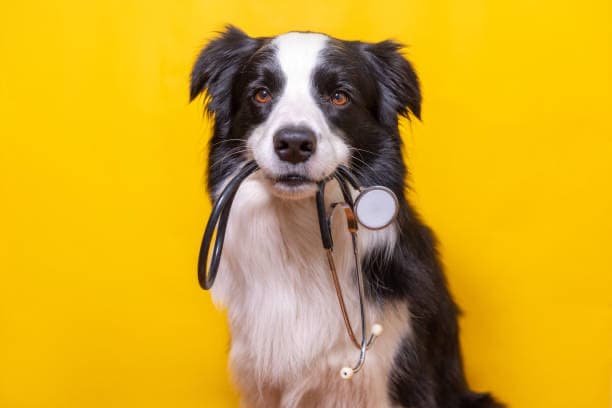TABLE OF CONTENTS
General Clinical Examination of animals
General Clinical Examination of animals while case taking in hospital is compulsory to reach the diagnosis. if we know the general clinical examination, it’s very easy to find out the actual cause.
Signalment
Signalment is first thing to do in General Clinical Examination of animals. Signalment means identification of the animal like species, breed, colour, sex and age, basic biometrics like weight, height and body mass index etc.
Apart from this ear tags, tattoo, branding marks and microchips can be included which is vital in vetero-legal cases and also for insurance purpose.
Anamnesis or History taking
A minimal interview consisting of the chief complaint and primary history of present illness. Anamnesis or history should be consisting – Chief complaint (the reason client bring animal to hospital), History of present illness (like from how long this issue client observing, how severe and other possible history) and Past history (like this issue already seen in past time or any related issue)
The past history which is not relevant at that point may be omitted when circumstances say so. In certain cases all body systems is not necessary when there is focus on particular system.
Chief Complaint
Chief Complaint is the major health issues at the time of presentation like nasal bleeding, seizures, syncope, haematemesis, hypersalivation, vomiting etc.
Sample questions can be asked to the owner-
- Has the appetite changed?
- Has the animal vomited?
- Any change in appearance/Posture?
Past history
Past history of animals includes major illnesses, any previous surgery or operations, any current ongoing illness eg. diabetes, tuberculosis, demodicosis etc.
In case of animals in groups history should be oriented in such a way that when they were vaccinated, transported, dewormed, change in diet, whether any disease outbreak, death etc.
Sample questions can be asked like–
- Has the animal been suffering from any disease before?
- Has it been vaccinated/dewormed?
- Has it had any surgeries before?
General inspection of the animal
General Inspection is formed by looking and listening to an animal from a slight distance. This is used for collecting information about the animal in addition to history and form a decision to proceed on problem oriented approach.
Level of consciousness of the animals
Healthy animal shows interest in the environment whereas sick animal may–
- Sopor – sleepy
- Stupor – may be aroused with stimulus
- Coma – can’t be aroused
Appearance / Body shape
So when an animal is brought to you look for its appearance. You see a pot belly in case of intestinal parasitism in puppies. You see a bow leg in rickets in young dogs.
Behaviour of the animal
Looking for the behaviour of the animal when presented to you gives a clue to the underlying disease condition. Mostly when the animals are presented to you the animals are calm and co-operative, but they also turn to be nervous, restless, anxious and tense. Normal behaviour of animal is “Active and Alert”.
Pathological variations are-
- Restlessness to violence in case of colic in horses & lead poisoning in cows
- Comatose in milk fever in cows
- Frenzy in rabies in dogs
- Does not respond to owner’s call & running into objects with staggering gait in case of Organophosphorus poisoning in dogs
Posture of the animal
Posture of the animal while client bring the pet may be Standing or Recumbent (Sternal or Lateral recumbency).
Changes in posture associated with diseases takes a variety of forms including curvature of the vertebral column. Eg. Kyphosis, lordosis, scoliosis, rotation of the head, abnormal position of the limbs.
Gait of the animal
Animal may be made to walk towards and away from the clinician, or climb up the slope or walk down the slope or may be made to walk in hard or soft surfaces.
You have to look for-
- Rate
- Range
- Force
- Direction
- Strength
- Co-ordination
Gait may be observed in animal is-
- Stiff gait : Tetanus, Rheumatism, Osteomalacia, Fluorosis, Calcinosis.
- Stumbling gait : Later stages of grass tetany (Hypomagnesemia) in the cow in such a way as practically to result in a somersault.
- Circling gait: Vestibular disease, Cystic stage of taenia multiceps (Gid), Listeriosis, Pregnancy toxaemia, Ketosis in cattle, Otitis media / interna.
- Staggering gait : Acidosis, Ketosis, Hypomagnesemia, Rabies.
- Goose stepping gait : Excessive range, force, exaggerated flexion – Pantothenic acid deficiency (Pigs), Heartwater disease.
- Stilted gait: walking on the tip of the toe.
- Wobbling gait: there is slight in co-ordination of gait with knuckling over of the fetlock and swaying particularly of the hindquarters.
- Swaying of the hind quarters: Hind limb paralysis in dogs.
Abnormal sounds
Hear for sounds in the examination room at a distance. Few examples are-
- In the Brachycephalic breeds, respiratory sounds are heard loud which are characteristic for the breed.
- Pathological respiratory and intestinal sounds are heard from a distance.
- Snapping sounds during walking are heard when there are joint disorders.
Bodily condition
It can range from Normal to Obese based on the presence of subcutaneous fat.
Hair Coat of the animal
Normal Hair Coat of the animal is Smooth and Shinny. General appearance of hair coat like dryness, dullness, pigmentation changes, hair loss, localized or generalised is looked for.

